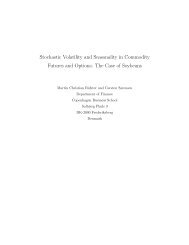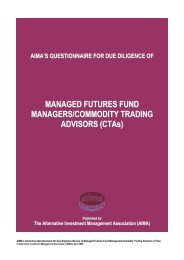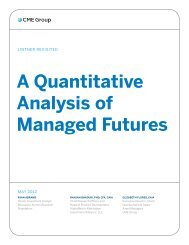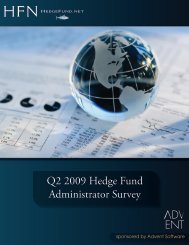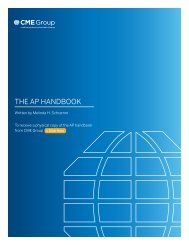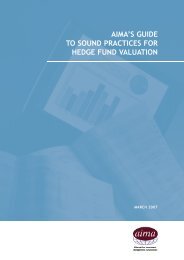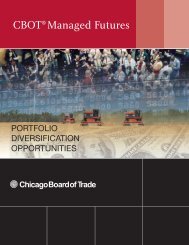SETTING UP A HEDGE FUND â PART TWO - BarclayHedge
SETTING UP A HEDGE FUND â PART TWO - BarclayHedge
SETTING UP A HEDGE FUND â PART TWO - BarclayHedge
You also want an ePaper? Increase the reach of your titles
YUMPU automatically turns print PDFs into web optimized ePapers that Google loves.
that I have little to add to what other people have said, but in this case, I have to<br />
admit that a recent presentation by Ron Suber*, of Merlin Securities, on “Merlin’s<br />
Big 12 Hedge Fund Best Practices”, left little to be added. And so, with Ron’s<br />
permission, I republish his comments on what he considers the minimum<br />
requirements, both quantitative and qualitative, necessary to be a successful hedge<br />
fund (manager) in today’s environment. I should point out that, as a non‐U.S.<br />
member of the hedge fund community, I always have a problem when American<br />
commentators, including lawyers and regulators, seem to consider that a HFM is the<br />
hedge fund itself. From my point of view, the 12 Hedge Fund Best Practices below<br />
actually are the 12 Best Practices that should be applied by the HFM and from which<br />
the fund will benefit. To my mind, the hedge fund is an inanimate object, the<br />
functions and operations of which are outsourced to third parties, including, inter<br />
alia, the administrator, the prime broker and, of course, the HFM. Be that as it may,<br />
here are:<br />
Merlin’s Big 12 Hedge Fund Best Practices:<br />
“1. Written compliance and employee trading policies with periodic attestation;<br />
2. Multiple levels of authority on cash movements with a minimum of two people<br />
controlling input, release and approvals;<br />
3. Written and consistent valuation policy by asset class;<br />
4. Sound technology and infrastructure with reliable back‐up, disaster recovery<br />
and business continuity plan;<br />
5. Open architecture to handle multiple prime brokers, multiple custodians and<br />
managed accounts. Understand why you use these firms and the alpha they<br />
generate;<br />
6. Clear risk management methodology;<br />
7. Ability to prove best execution;<br />
8. High‐quality audit, tax and legal representation;<br />
9. Sustainable third party administration with SAS 70 Type II;<br />
10. Dedicated operations manager, COO, CFO and CCO;<br />
11. Significant principal’s money in the fund;<br />
12. Daily position and cash reconciliation.”


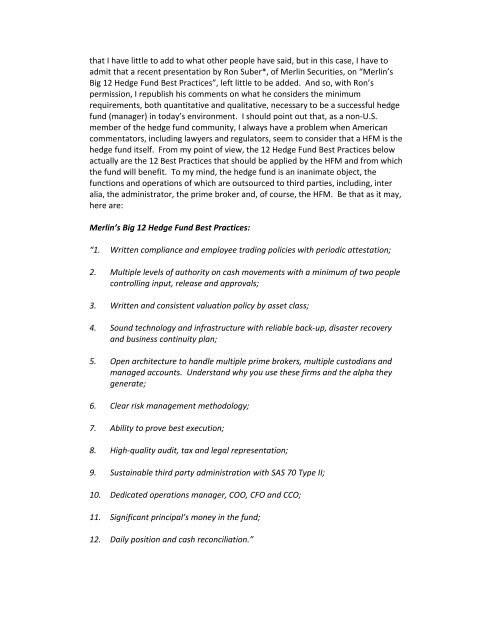
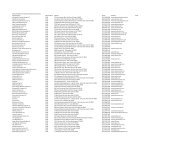
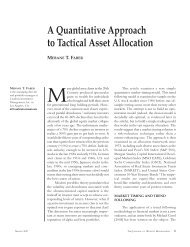
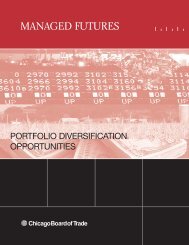
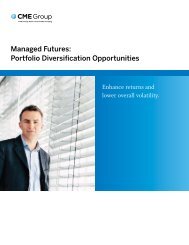
![Definitions & Concepts... [PDF] - Cycles Research Institute](https://img.yumpu.com/26387731/1/190x245/definitions-concepts-pdf-cycles-research-institute.jpg?quality=85)
